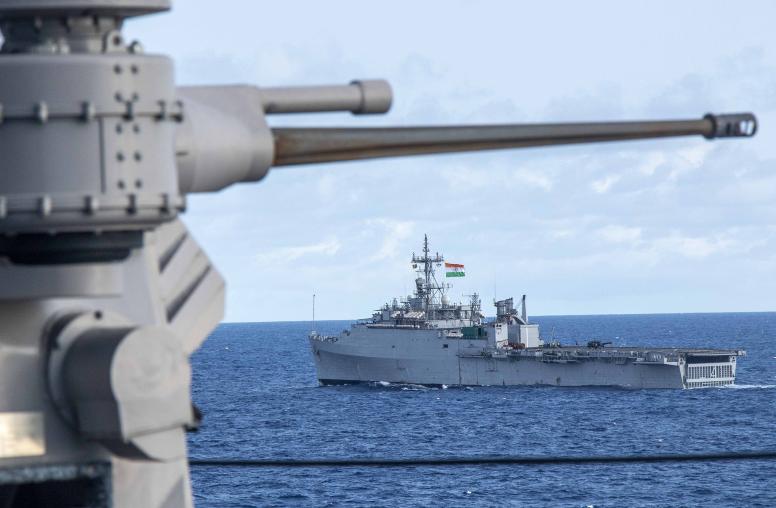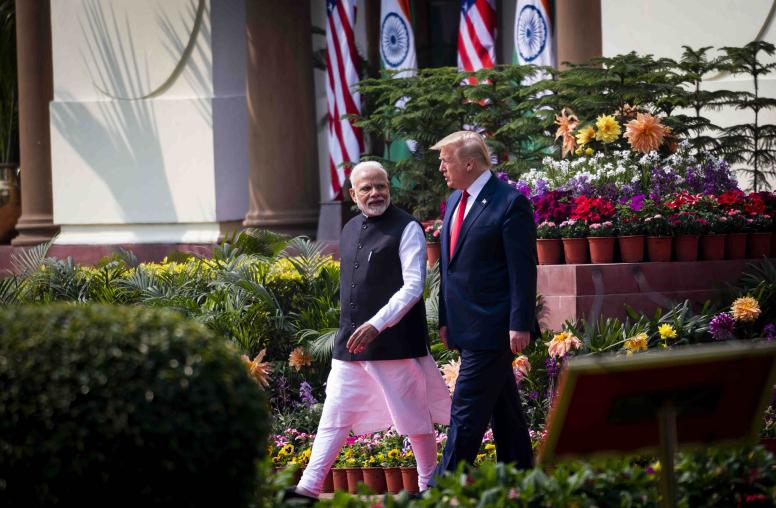The Latest Kashmir Conflict Explained
India argues it is stabilizing Kashmir—but, Islamabad says it will have dire consequences for the region.
Editor’s Note: USIP Jennings Randolph Fellows Dr. Tara Kartha and Ambassador Jalil Jilani look at the latest crisis in Kashmir from their respective views. Dr. Kartha was a member of India’s National Security Council for 15 years and has over 30 years’ experience in national security policy. Amb. Jilani, a career Pakistani diplomat, is a former ambassador to the U.S. and former foreign secretary. This post represents the views of the authors and not those of USIP.

India aims to stabilize Jammu and Kashmir. But, why now?
Kartha: On August 5, India decided to take a long-considered move using article 370 of its constitution to change the status of the state of Jammu and Kashmir. Although this has long been a part of the platform of Prime Minister Narenda Modi’s Bharatiya Janata Party (BJP), the overwhelming majority of parliamentarians across all parties supported the decision—with 351 votes for and 72 against. Even the general secretary of the opposition Congress Party expressed his approval. This has been a move long in the making, with the backing of a wide swath of Indian political actors. But, the question remains, why now?
New Delhi made this move in an effort to stabilize Jammu and Kashmir and integrate it more fully with the Indian state. The Modi government’s decision is aimed at promoting local governance and encouraging investment in a state that has lagged behind for decades. The lack of effective local governance has hampered the development of the entire state of Jammu and Kashmir, including Ladakh, Jammu, and tourism dependant areas like Sonamarg and Gulmarg.
Although much criticized, New Delhi’s stepped-up security and communications restrictions implemented along with the August 5 decision were lifted in 136 of 197 police station areas. Many schools have also reopened. Jammu and Kashmir will gradually return to normal, barring any terrorist activity or violence.
India believes that the accession of Jammu and Kashmir is final, and any unfinished business regarding partition of the greater Kashmir region only concerns areas occupied by Pakistan. Reorganizing Jammu and Kashmir made no territorial changes, but sought to more closely integrate the state with the rest of India. Therefore, for India, the dispute between India and Pakistan remains unchanged.
The advancement of U.S.-Taliban talks, and the imminence of a deal, has demonstrated to India that the U.S. is serious about withdrawing from Afghanistan. India fears that this could lead to history repeating itself. When another superpower, the Soviet Union, left Afghanistan some 30 years ago, intense terrorism in Kashmir immediately followed, as those who fought the Soviets turned to India.
To India, Islamabad’s objections to the move ring hollow. Over the years, Pakistan has unilaterally changed the status of other territories it occupies in the greater Kashmir region, namely Azad Kashmir and Gilgit-Baltistan. Just last year, Pakistan changed the structure of Azad Kashmir’s government. India protested the change. But, unlike Pakistani Prime Minister Khan’s warning of a heightened risk of war and terrorism following the August 5 decision, India did not resort to threats over Azad Kashmir.
Islamabad now has a choice. It can continue to support terrorism in Kashmir, which has not only devastated the region, but also severely hurt Pakistan’s economy. Or it can choose to cease such support and focus on its internal economic problems. Once the threat of terrorism is removed, there will surely be room for dialogue.
By rooting out terrorism, Pakistan can focus on economic development and more effectively leverage its immense resources to boost its economy. This could encourage economic linkages across the region, leading to greater regional stability in the long run.
What are the consequences for India, Pakistan and the region?
Jilani: India’s unilateral decision to revoke Article 370 of its constitution has severely hampered the chances of a renewal of the peace process between New Delhi and Islamabad. From Pakistan's perspective the Indian action constitutes a grave violation of the U.N. Security Council resolutions on Kashmir and bilateral Pakistan-India agreements, such as the 1972 Shimla Agreement and the Lahore Declaration.
Prime Minister Narenda Modi’s government’s decision will have far reaching consequences for Pakistan-India relations and regional peace and security. Islamabad says that increased repression and human rights violations by Indian forces in Indian Occupied Kashmir will breed violence, fuel indigenous uprising, and further generate tension with Pakistan. Yet, since August 5, India has mobilized hundreds of thousands of troops, detained thousands of Kashmiris, and imposed a curfew resulting in food and medicine shortages. In Islamabad’s eyes, the disputed region of Jammu and Kashmir has become a garrison area.
With the illegal steps taken by the Indian government—imposition of curfew, arrests of political leaders and blockade of communications—the situation has reached a tipping point. Intensifying violence in Indian-occupied Kashmir poses serious challenges for Pakistan and the region. These challenges include:
- For Pakistan, Kashmir remains the core issue and Islamabad cannot envision a dialogue with India that excludes the Kashmir issue.
- Islamabad rejects India’s claim that Kashmir is an internal matter, pointing to past and present international and bilateral calls for a peaceful resolution through dialogue. India’s move violates multiple U.N. Security Council resolutions and is unacceptable to Pakistan and the international community.
- The faint hope for a reasonable settlement based on the four-point formula—which became the basis of back-channel negotiations during the 2004-08 peace process and envisaged self-governance for Kashmiris, demilitarization, travel across the Line of Control and a monitoring mechanism, while also protecting the vital interests of the two countries—has been extinguished.
- Pakistan fears India could stage a false flag in either Jammu and Kashmir or mainland India and blame it on Pakistan in order to divert attention from the volatile situation in Kashmir.
- The possibility of direct Indian intervention in Azad Kashmir or subversion inside Pakistan cannot be ruled out. In case India directly intervenes in Pakistan or in Azad Kashmir or Gilgit-Baltistan (both of which are part of what the U.N. calls Pakistan-administered Kashmir), it could result in war between the nuclear powers with incalculable implications for both countries and the region.
- The outcome of the current Indian actions could result in more refugees from India into Pakistan.
- The latest Indian action will complicate the resolution of other long-standing disputes over issues like the Siachen Glacier and Sir Creek.
- The Indian decision will adversely impact people-to-people contacts and trade relations between the two countries.
- Tension between India and Pakistan will have a negative impact on regional security. The South Asian Association for Regional Cooperation process is already suspended due to India-Pakistan tensions. India’s move is a further blow to regional cooperation.
Irrespective of India’s actions, the fact is that Kashmir is an internationally recognized disputed territory and will remain so until the legitimate aspirations of the Kashmiris are fulfilled. India’s repression in Kashmir is unlikely to change this reality.



